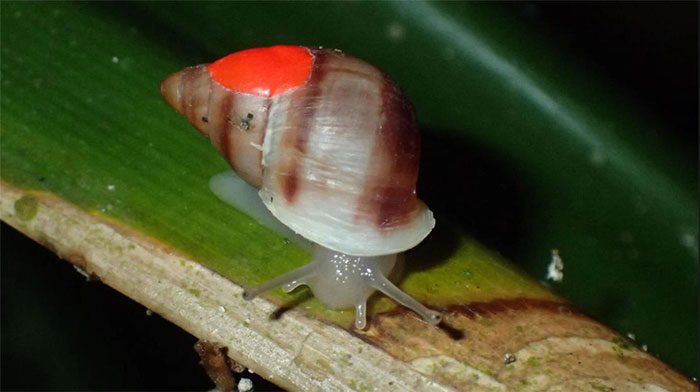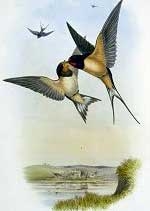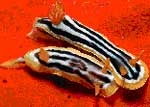5,000 large Partula snails raised in zoos across London, Scotland, and Missouri (USA) have “traveled” over 14,500 km to return to the wild in the Pacific Ocean.
These 5,000 snails, each measuring less than 2.5 cm in length, were released onto islands in the Pacific. They were marked with a red dot on their shells to reflect ultraviolet light, enabling conservationists to monitor their growth progress.

Partula snails marked with a red dot on their shells to reflect ultraviolet light – (Photo: ZSL)
The Partula snails, known as the Polynesian tree snails, are classified as “extinct in the wild.” They feed on decaying plant tissue and fungi, playing a vital role in maintaining forest health.
When the African giant land snails invaded some islands in French Polynesia, the pink snail was introduced to address the issue. Unfortunately, these pink snails hunted and decimated the native snail population.
Reintroducing native Partula snails to their natural habitat is a goal of the Polynesian authorities aimed at restoring ecological balance on these islands.
In the early 1990s, some of the last surviving native snails were rescued from the islands. They were brought to the London Zoo (UK) and Edinburgh Zoo (Scotland) as part of an international conservation breeding program involving 15 zoos worldwide.
Paul Pearce-Kell, the invertebrate curator at the Zoological Society of London, stated: “After decades of caring for these snails in conservation zoos, we are raising them in a natural environment to prepare for their return to the islands.”
A total of 11 species of native Partula snails have been rescued, including the last known individual of the species Partula taeniata sumulans. This solitary snail was brought to Edinburgh Zoo in 2010 and has since bred hundreds of descendants.
Unfortunately, the species Partula faba was not as fortunate. Nine individuals of Partula faba at Edinburgh were unable to reproduce successfully in captivity, leading to the species’ extinction in 2016.
“We have re-released over 21,000 Partula snails to the islands, including 11 species and subspecies of the Polynesian tree that are extinct in the wild. This year, 2023, marks the largest re-release effort to date,” said Mr. Pearce-Kell.










































